Ultimate Fish and Chip Recipe. Discover the best fish and chips recipe that’s crispy, juicy, and full of flavor. Make this classic dish at home today. Try it now!
The Ultimate Fish and Chip Recipe: Perfect Crispy Fish and Golden Chips Every Time
Few meals are as loved worldwide as fish and chips. This classic dish is a staple that has become popular globally. There’s something magical about the crispy batter hugging tender fish paired with crunchy chips. Yet, achieving that perfect balance of crunch and flavor at home can seem tricky. With the right ingredients and some simple techniques, you can make restaurant-quality fish and chips right in your kitchen.
This article will guide you step-by-step. We’ll cover choosing the best fish, creating the perfect batter, frying tips, and serving ideas. Get ready for a homemade feast that rivals any takeaway!
Note: Products links below will take you to Amazon!
Choosing the Right Fish Available for Fish and Chips

The best fish possible for fish and chips should be fresh, flaky, and hold together during frying. Cod is the top choice because it’s cheap, tender, and has a mild taste that pairs well with chips and tartar sauce. Haddock is similar but slightly firmer and richer in flavor. Pollock is a common, less expensive substitute for cod. Always pick fresh, whole fish or thick fillets. Freshness matters a lot; avoid fish that smells strong or has been sitting too long. The fish should be lean and firm enough to get crispy. In short, the best fish is fresh, firm, and stays intact while frying.
Types of Fish Ideal for Fish and Chips
Fish should be firm, flaky, and easy to fry. Popular choices include cod, haddock, pollock, and sometimes hake. These fish have a mild flavor and hold up well during frying. Cod and haddock are favorites because they’re tender inside with a nice meaty texture. Pollock is a more affordable alternative, and it still tastes delicious when cooked properly. Each offers a slightly different flavor profile, so pick what suits your taste.
Fresh vs. Frozen Fish
Fresh fish is always the top choice for superior flavor and texture. When you buy fresh, look for clear eyes, firm flesh, and a clean smell. Avoid fish with dull skin or a strong fishy smell. However, frozen fish can work well too, especially if bought from a reputable source. When using frozen fish, thaw it gently in the fridge to avoid losing moisture. Proper thawing ensures your fish stays juicy and cooks evenly, making your final dish taste just as good.
Preparing the Fish For The Fish and Chip Recipe
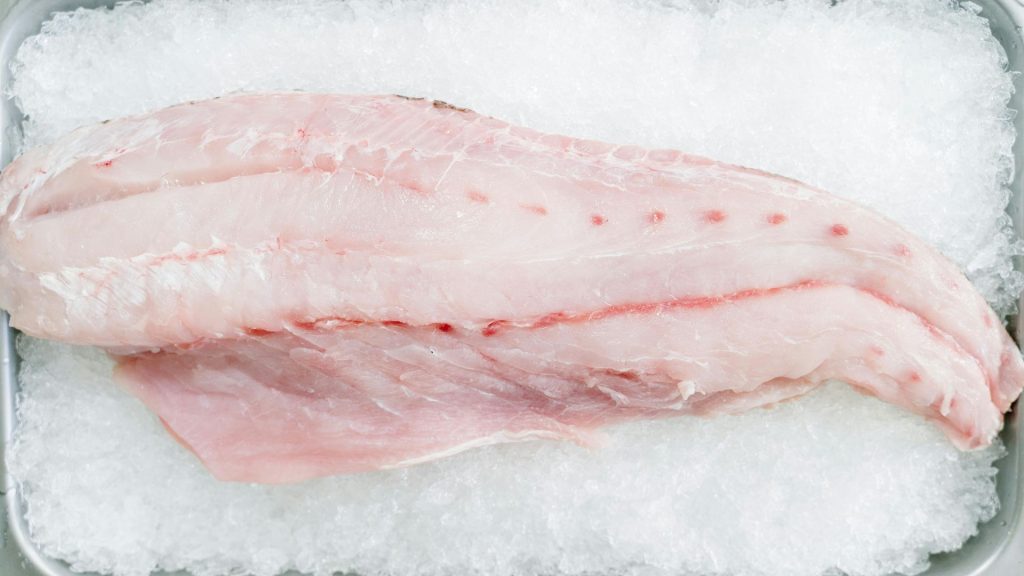
Start by choosing fresh fish such as cod or haddock. Rinse the fillets under cold water and pat dry with paper towels. Cut the fish into even pieces, about 4 to 6 inches long, to ensure they cook evenly. Remove any skin or bones, if present. Lightly season the fish with salt and pepper for flavor. For best results, let the fillets sit for a few minutes before coating. This helps to lock in moisture and improves the overall taste. Use a gentle touch to avoid breaking the fish apart during preparation. Properly prepared fish results in crispy, tender chips every time.
- Cleaning and Cutting
Start by rinsing the fish in cold water to remove any scales or debris. Pat it dry to remove extra moisture. Cut the fish into strips or fillets about 4-6 inches long. Make sure the pieces are even in size for uniform frying. Proper portioning helps avoid burnt batter or undercooked fish. - Marinating and Seasoning
Light seasoning is all you need—sprinkle with salt and pepper. For added zest, squeeze fresh lemon juice over the fish before battering. If you want to experiment, gently marinate the fish in a mixture of lemon juice and herbs for 30 minutes. Keep it simple for a pure fish flavor that complements the batter.
Tips from Seafood Experts
Many chefs suggest brushing the fish with a little oil or a light dusting of flour before battering. This helps the batter stick better and results in a crispier finish. Seafood specialists agree that dry, well-prepared fish is the secret to perfect frying.
Creating the Perfect Fish Batter

Start with cold water or fizzy soda for a lighter batter. Mix flour with a pinch of salt and baking powder. Add the liquid gradually, stirring gently to avoid lumps. The batter should be thick enough to coat the fish but not gluey. For extra crunch, toss in a little cornflour or rice flour. Let the batter rest for 10 minutes before frying. Keep the oil hot—around 180°C—so the batter crisps quickly. If it’s too thick, thin it out slightly with more water. Avoid overmixing to keep the batter light and airy. A smooth, even coat ensures crisp, golden fish every time.
Classic Beer Batter Recipe
The hallmark of great fish and chips recipe is a light, crispy batter. Here’s a simple recipe:
- 1 cup all-purpose flour
- 1 teaspoon baking powder
- 1/2 teaspoon salt
- 1 cup cold beer (or sparkling water as an alternative)
To make the batter, whisk the flour, baking powder, and salt in a bowl. Gradually pour in the cold beer, stirring gently until smooth. The batter should be thick but pourable. Let it rest for 10 minutes. Resting allows the gluten to relax, giving you a crunchier coating.
Alternative Batter Options
Not a fan of beer? Use sparkling water or even vodka for a lighter batter. Gluten-free flour mixes or plant-based options like chickpea flour also work well. These variations suit dietary needs without sacrificing crunch.
Tips for Achieving Crispy Batter
- Rest the batter before frying to enhance crispiness.
- Keep the batter cold; heat causes it to lose its crunch.
- Use the right consistency—thick enough to coat the fish evenly.
- Maintain oil temperature about 350°F ( 175°C )—too hot and the batter burns, too cold and it becomes soggy.
Preparing the Chips (French Fries)

Start by washing the potatoes to remove dirt and surface starch. Peel them if you prefer a cleaner look, but leaving the skin on adds flavor and texture. Cut the potatoes into uniform sticks, about 1/4 to 1/2 inch thick, to ensure even cooking. Rinse the cut fries in cold water to remove excess starch and make them crispier. Pat them dry with a towel or paper towels. This step is key because wet fries can cause splattering during frying. For best results, soak the cut fries in cold water for 30 minutes. Then drain and dry them again before frying. Proper preparation leads to crunchier, tastier French fries.
Selecting Potatoes
Choose starchy potatoes like Maris Piper, Russet, or King Edward. These varieties develop a fluffy interior and a crispy exterior when fried. Avoid waxy potatoes—they tend to hold moisture and stay soft.
Cutting and Soaking
Cut potatoes into even sticks, about 1/4 to 1/2 inch thick. Place the cut chips in cold water for at least 30 minutes. Soaking removes excess starch, helping chips become crispier when fried. Drain and pat them dry thoroughly before cooking.
Par-cooking and Final Frying
Par-cook the chips by blanching in hot oil at 320°F (160°C) for about 4-5 minutes. Remove and drain. Just before serving, heat the oil to around 350°F ( 175°C) and fry the chips until golden brown. This two-step process ensures crispy, fluffy chips that hold their shape and color.
Fish and Chips Frying Techniques and Tips
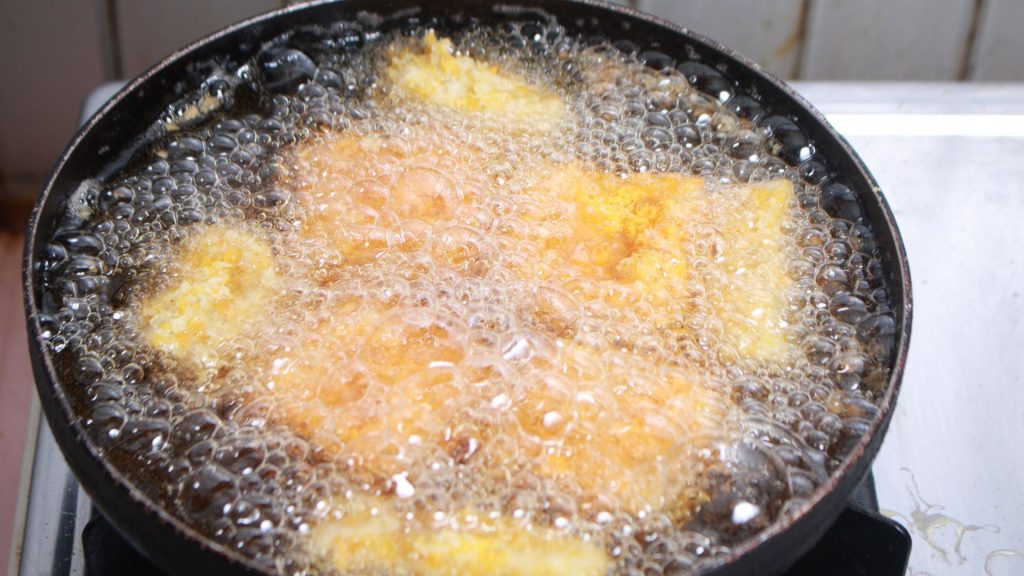
Frying fish and chips starts with the right batter. Mix cold water or beer with flour to keep it light and crispy. Don’t overload the batter; a thin coat works best. Use oil at about 350°F to 375°F—hot enough for a quick cook that keeps the fish moist. Drop pieces gently into hot oil, avoiding crowding the pan, which can lower the temperature. Cook in batches if needed.
Flip the fish once the batter turns golden and crispy, usually after 3-4 minutes. Drain excess oil on paper towels before serving. Keep the oil temperature steady by adjusting the heat as needed. Resting the batter for about 20 minutes helps it stick better and crispen up. Use a sharp thermometer to check oil heat—hot oil means quicker cook and crunchier finish. Always season the batter lightly with salt to boost flavor. These simple tips prevent sogginess and ensure a perfectly crispy crust.
Equipment Needed
Use a deep fryer or a heavy-bottomed pot with a reliable cooking thermometer for oil. You can even get fancy and use an electronic thermometer. Avoid shallow frying, which can lead to uneven cooking and oil splatters. Have a slotted spoon preferably one with a longer handle or wire rack ready for draining excess oil.
Find the right Fish and Chip Equipment on Amazon below.
Optimal Oil and Temperature
Vegetable oil, sunflower, or canola oil are best choices due to their high smoke points. Maintain oil temperature around 350°F (175°C ). Use a thermometer to keep it steady, as temperature fluctuations cause sogginess or burning.
Step-by-Step Frying Process
First, fry the battered fish for about 4-6 minutes until golden and crispy. Don’t overcrowd the pan; fry in batches. Next, fry the chips until golden and crispy, about 3-4 minutes. Drain on paper towels and serve immediately for the crunchiest bite.
Troubleshooting Common Issues
- Batter not crisping: Make sure batter is cold, and oil is hot enough.
- Soggy chips: Soak potatoes beforehand and avoid overcrowding during frying.
- Overcrowding the pan: Cook in small batches to maintain consistent temperature.
Serving and Accompaniments
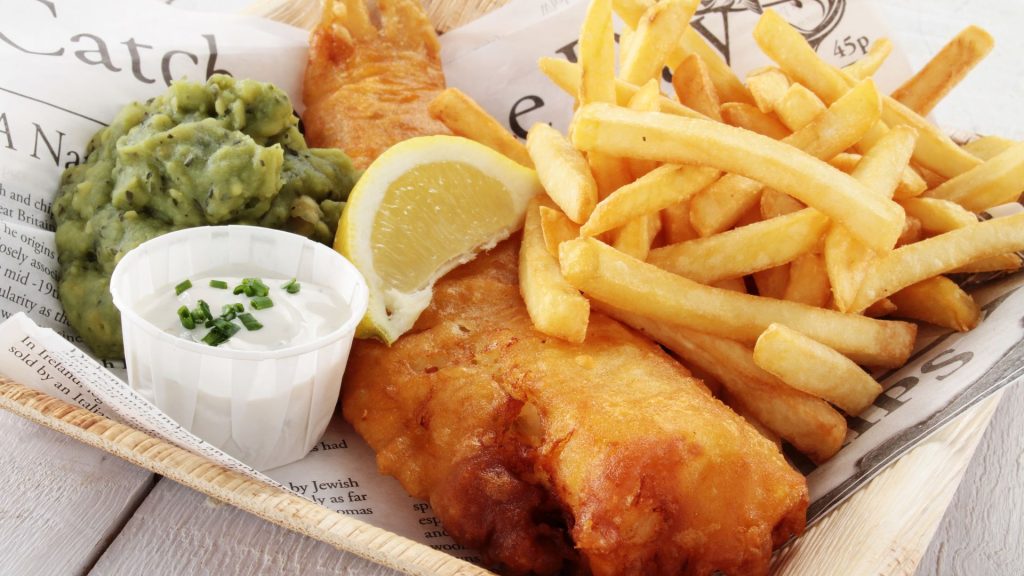
Serve fish and chips with classic sides like tartar sauce, malt vinegar, and lemon wedges. Add a handful of mushy peas or pickles for that authentic touch. Wrap it all up in paper for that seaside vibe.
Modern Variations
Experiment with dips like aioli, spicy ketchup, or garlic mayo. For healthier options, bake instead of fry or serve with a side salad. You can also try different fish or sweet potato chips for a modern twist.
Tips for Best Enjoyment
Serve hot right after frying—you want the crispiness to shine through. Keep fried items warm in a low oven if needed. Avoid stacking, as this can cause sogginess.
Thank you for Reading Our Ultimate Fish and Chip Recipe Post
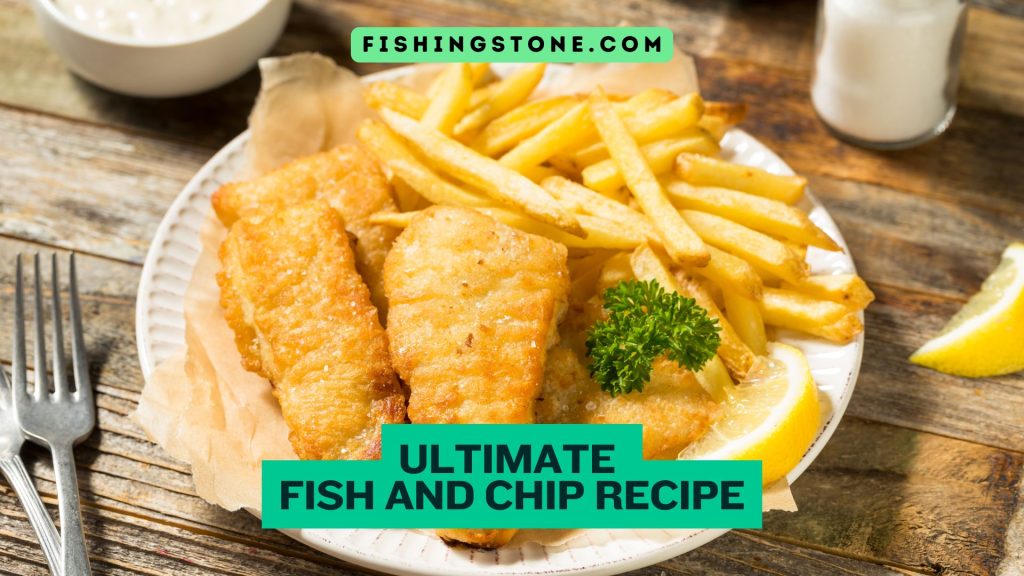
Making perfect homemade ultimate fish and chip recipe is easier than you think when you follow simple steps. Quality ingredients, proper prep, and careful frying are key to achieving that golden, crispy result. Whether you stick with classic recipes or try your own variations, remember that patience and attention to detail pay off. Now, roll up your sleeves and get frying—your friends and family will thank you! Enjoy the process and savor every crispy bite of your homemade fish and chips.
Happy Grubbing!
Fishing Stone posts on several sites on Socia Media. By joining us on your favorite ones you can get updates on our latest Fishing Posts.
Find us on Facebook – Twitter – Pinterest – YouTube
Check out our post on some cool fishing gadgets that any fisherman would enjoy! Do not forget any of these things that could ruin your next fishing trip here.
Hope you have fun Fishing every day. Fish On!


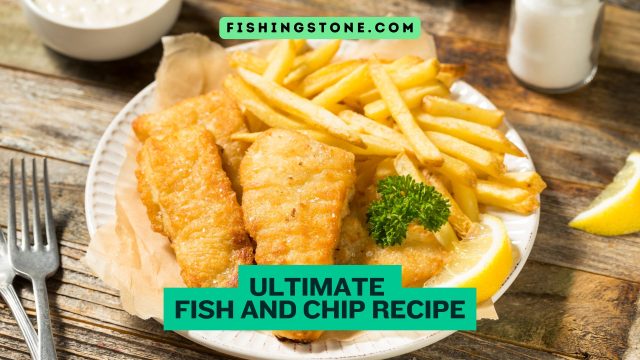















The best fish and chips start with good ingredients and simple steps. Use fresh white fish like cod or haddock. Dip the fish in a batter made from flour, baking soda, salt, and cold beer. Let the batter rest for a few minutes. Heat oil until hot, then fry the fish until golden and crispy—about four minutes per side. For chips, cut potatoes into thick sticks. Rinse to remove excess starch, then fry twice—first until soft, then again for crunch. Serve with salt, vinegar, or tartar sauce. This recipe delivers juicy fish and crunchy chips every time. Make it at home and enjoy the taste of classic fish and chips.